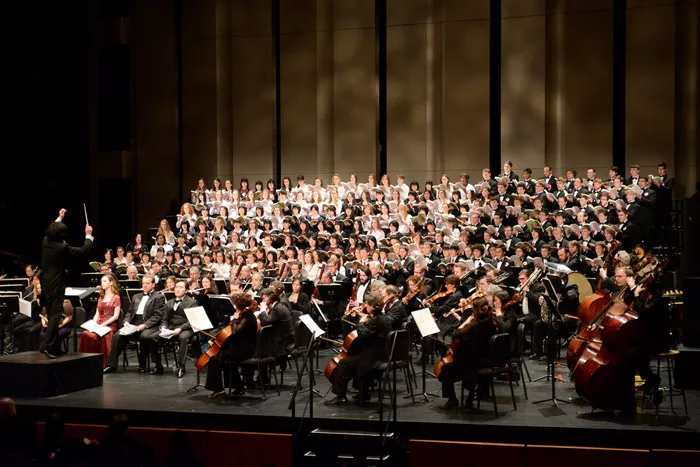Igor Stravinsky stands as one of the most innovative and influential composers of the 20th century. Throughout his career, he challenged traditional musical conventions, pushing boundaries and paving the way for new forms of expression. Among his many groundbreaking works, the Symphony in Three Movements holds a special place, showcasing his mastery of form, rhythm, and orchestration. In this article, we embark on a journey to explore the intricacies of this remarkable symphony, delving into its historical context, structural elements, and musical innovations.
Historical Context: A World in Turmoil
To truly understand the Symphony in Three Movements, one must first consider the historical backdrop against which it was composed. Stravinsky began work on the symphony in 1942, during the midst of World War II. The world was engulfed in chaos, with Europe torn apart by conflict and uncertainty. Against this tumultuous backdrop, Stravinsky sought to create a work that captured the spirit of the times while offering a glimpse of hope and resilience.
Structure and Form: A Symphony Reimagined
One of the most striking aspects of Stravinsky’s Symphony in Three Movements is its unconventional structure. Unlike traditional symphonies, which typically consist of four movements, Stravinsky opts for a three-movement structure, each of which is distinctly characterized and interconnected. The first movement bursts onto the scene with relentless energy, propelled by driving rhythms and angular melodies. Here, Stravinsky’s use of asymmetrical phrases and shifting meters creates a sense of urgency and dynamism, reflecting the chaos of the war-torn world.
The second movement, by contrast, offers a moment of respite, with its hauntingly beautiful melodies and lush orchestration. Yet beneath the surface tranquility, there is an undercurrent of tension and unease, hinting at the lingering shadows of war. As the movement unfolds, Stravinsky explores a wide range of textures and timbres, from delicate solo passages to towering orchestral climaxes, showcasing his remarkable skill as an orchestrator.
The third and final movement brings the symphony to a dramatic conclusion, with its explosive rhythms and jagged melodies. Here, Stravinsky draws upon elements of Russian folk music, infusing the music with a sense of primal energy and vitality. The movement builds to a frenetic climax, before ultimately subsiding into a hauntingly beautiful coda, bringing the symphony to a close with a sense of profound introspection.
Innovations and Influences: Breaking New Ground
In addition to its unconventional structure, the Symphony in Three Movements is notable for its bold harmonic language and innovative use of rhythm. Throughout the symphony, Stravinsky explores a wide range of harmonic colors and textures, blending traditional tonal elements with dissonant clusters and exotic scales. This harmonic richness adds depth and complexity to the music, inviting listeners to explore new sonic landscapes.
Similarly, Stravinsky’s rhythmic innovations are evident throughout the symphony, with intricate polyrhythms and shifting meters creating a sense of propulsion and forward momentum. In the hands of a lesser composer, such rhythmic complexity might have resulted in chaos and confusion. Yet Stravinsky masterfully harnesses these rhythmic elements, using them to drive the music forward with precision and clarity.
Influences of jazz and popular music can also be heard throughout the symphony, reflecting Stravinsky’s ongoing fascination with contemporary musical trends. From the syncopated rhythms of the first movement to the blues-inflected melodies of the second, these influences add an extra layer of richness and diversity to the music, further expanding its expressive range.
Legacy and Impact: A Symphony for the Ages
Nearly eight decades after its premiere, Stravinsky’s Symphony in Three Movements continues to captivate and inspire audiences around the world. Its bold experimentation and daring innovation have cemented its place as a cornerstone of 20th-century repertoire, while its timeless themes of struggle and resilience resonate with listeners of all generations.
Moreover, the Symphony in Three Movements serves as a testament to the enduring power of music to transcend the chaos and turmoil of the world around us, offering moments of beauty and clarity in even the darkest of times. As we continue to grapple with the challenges of the 21st century, Stravinsky’s symphony stands as a beacon of hope and inspiration, reminding us of the transformative power of art to illuminate the human spirit.
Conclusion
In conclusion, the Symphony in Three Movements stands as a towering achievement in the pantheon of orchestral music, a testament to Stravinsky’s genius and innovation. From its unconventional structure to its bold harmonic language and rhythmic complexity, the symphony continues to challenge and inspire listeners with its timeless beauty and profound emotional depth. As we continue to explore and celebrate the legacy of Igor Stravinsky, the Symphony in Three Movements remains a shining example of his enduring artistic vision and creative spirit.

